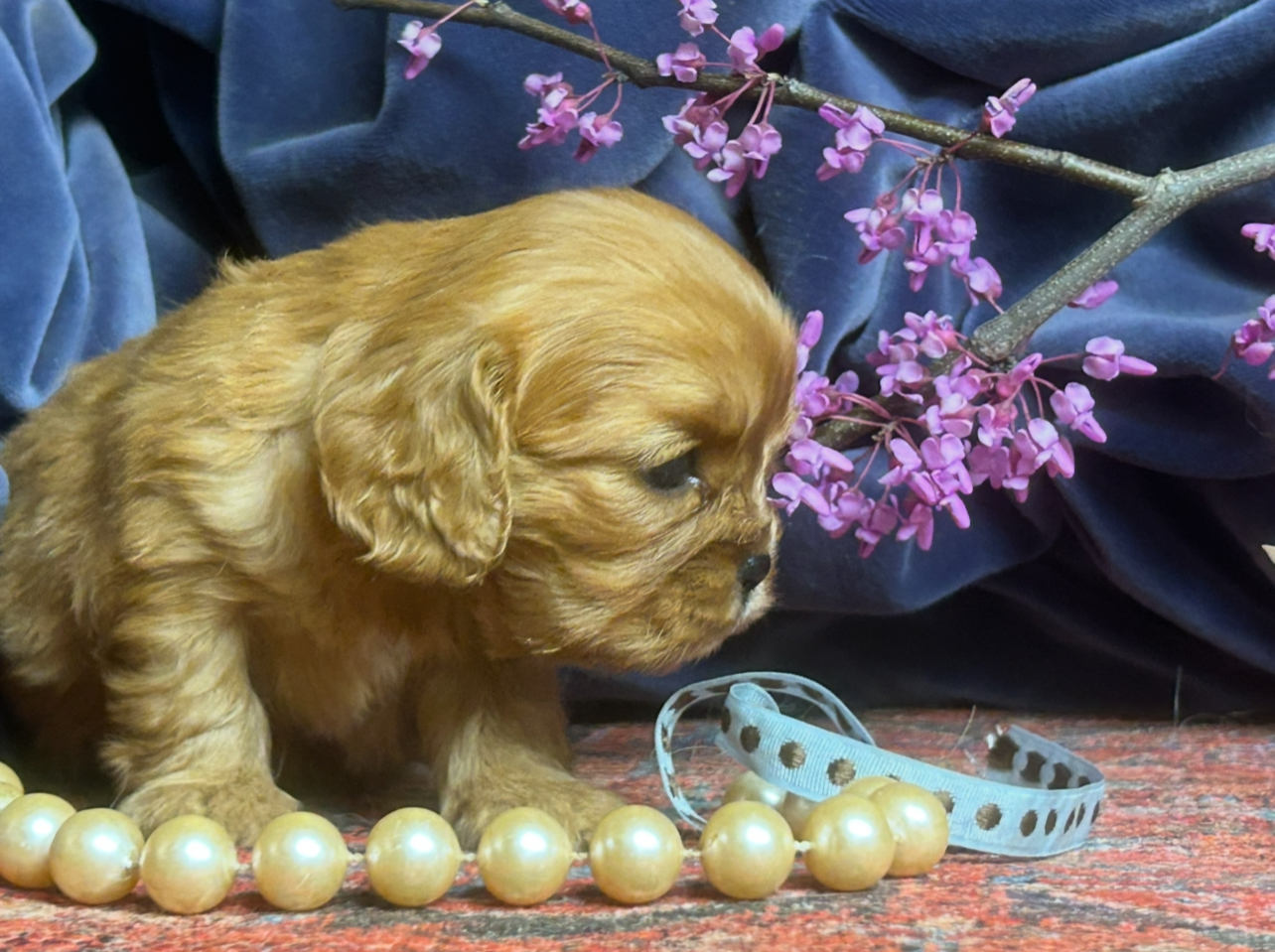Cavalier King Charles Spaniels are the best of two worlds, combining the gentle attentiveness of the toy breed with the verve and athleticism of a sporting spaniel.
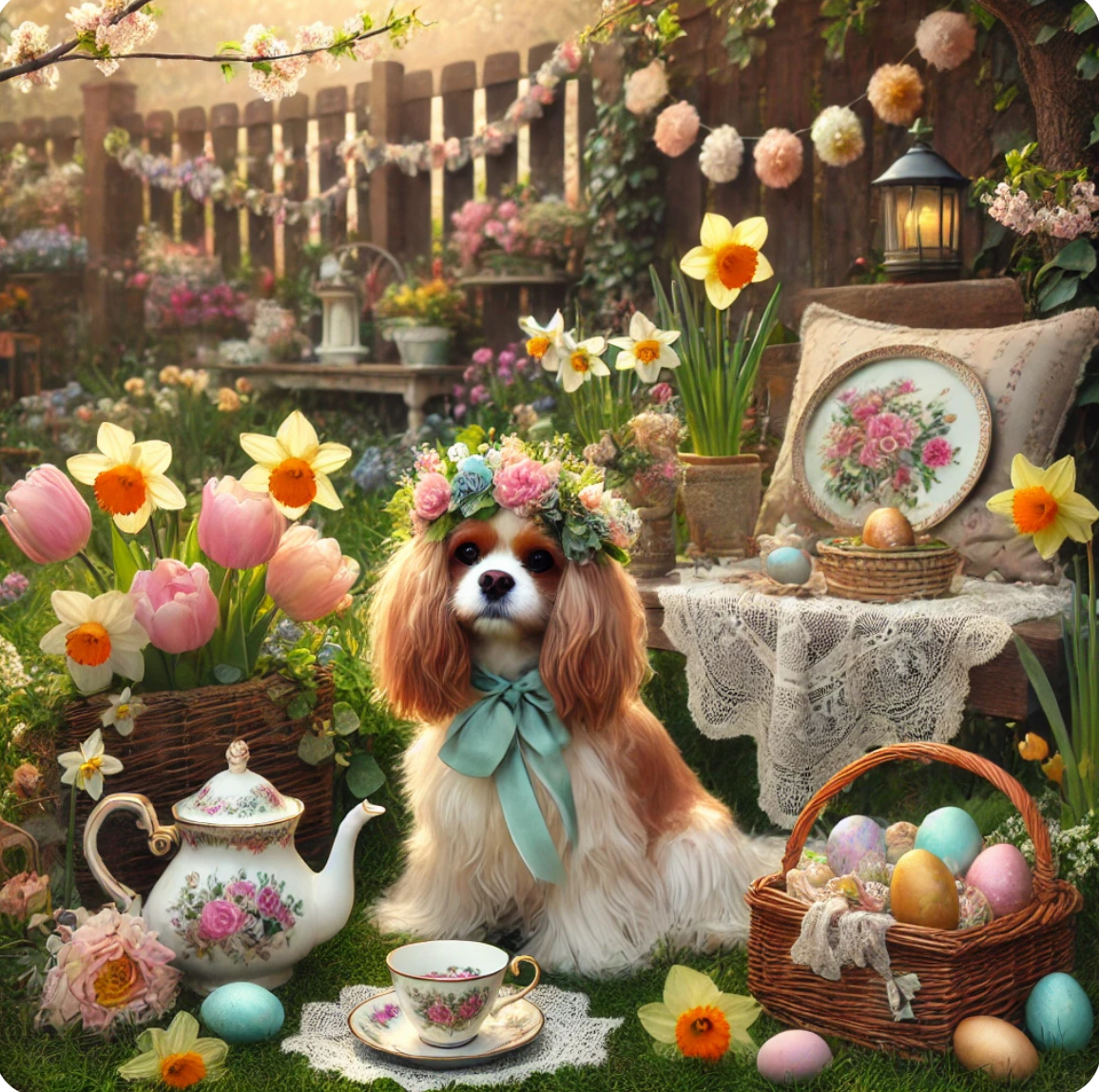
Choosing the Cavalier:
Cavalier King Charles Spaniels are known for their gentle, affectionate personalities and adaptable, easygoing nature, making them ideal companions for a variety of households. Let’s explore the qualities that make Cavaliers such beloved pets:
1. Companionship
• Velcro Dogs: Cavaliers are often called “velcro dogs” because they love being close to their humans. They are known to follow their owners from room to room and happily settle wherever their family is. This attachment makes them wonderful, devoted companions!
• Gentle and Affectionate: Cavaliers are famously gentle, with a calm and sweet temperament. They enjoy cuddling, being held, and giving love, which is why they’re often recommended for families, singles, or elderly owners looking for a loyal, affectionate companion.
• Great with Other Pets and People: Cavaliers are naturally friendly and sociable. They usually get along well with other dogs, cats, and other pets, as well as children. Their gentle, non-aggressive nature makes them good companions for multi-pet households.
2. Perfect Size for a Variety of Living Spaces
• Compact and Manageable: Weighing between 13–18 pounds and standing around 12–13 inches tall, Cavaliers are small enough to be easily manageable. Their size makes them adaptable to many environments, from city apartments to country homes.
• Easy to Travel With: Their size also makes Cavaliers easy to take on trips, whether for short car rides, road trips, or even air travel. Many owners find their Cavaliers to be excellent travel companions.
• Easy on Furniture: Being a smaller breed, Cavaliers are less likely to cause damage or take up much space. They can comfortably curl up on a small dog bed or a cozy corner of the couch, which makes them well-suited to smaller homes.
3. Adaptability to Different Lifestyles
• Flexible Energy Level: Cavaliers are moderately active dogs, meaning they enjoy playtime and daily walks but don’t require excessive exercise. They’re happy with a leisurely stroll or some indoor play, but they’re also capable of keeping up on longer walks if the owner prefers.
• Adaptable to Routine: Whether you have a busy work schedule, spend a lot of time at home, or have an unpredictable routine, Cavaliers can adapt well. They’re content to relax at home but will also enjoy tagging along if you’re out and about.
• Great in Small Spaces: Cavaliers are well-suited to apartment living. As long as they get some daily exercise and time outside, they’re usually content indoors and don’t need a yard to be happy.
4. Love and Affection
• Highly Affectionate: Cavaliers are known for their affectionate nature and their desire to be close to their family members. They’re very in tune with human emotions and often provide comfort, making them excellent therapy or emotional support dogs.
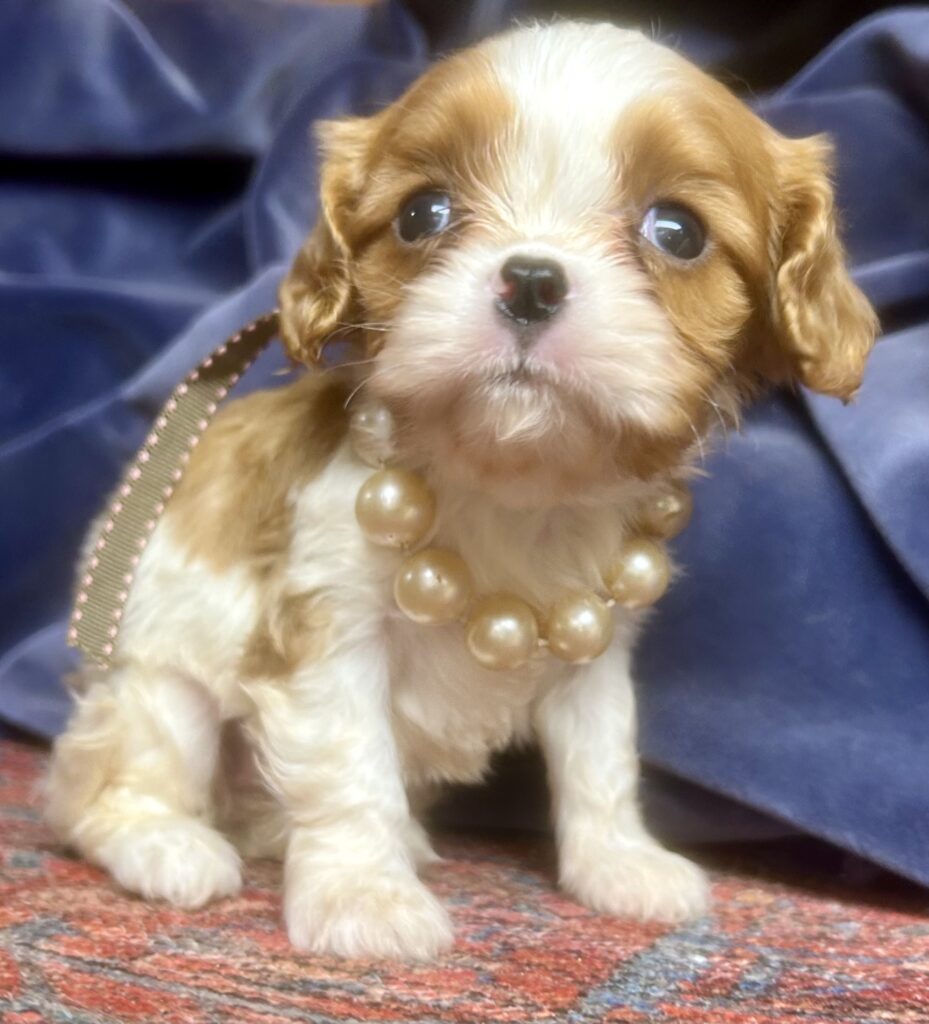
• Loyal Bonding: Cavaliers form strong, lasting bonds with their humans. They’re happy spending hours just lounging near their loved ones, and their calm, loving demeanor makes them excellent cuddle companions.
• Social and Friendly with Visitors: Most Cavaliers are sociable and welcoming to new people, so they often do well with guests and enjoy making new friends. This trait makes them a wonderful choice for households that frequently entertain.
5. Ease of Care
• Moderate Grooming Needs: Cavaliers have a silky, medium-length coat that requires brushing a few times a week to prevent matting, especially around the ears. They don’t have a dense undercoat, so they don’t shed as heavily as some other breeds. Many owners find their grooming needs manageable, and regular brushing keeps their coat shiny and soft.
• Healthy, Balanced Diet: Cavaliers do well on a balanced diet, and because they’re prone to weight gain, portion control is important. Their feeding needs are relatively simple, and they’re not particularly picky eaters.
• Easygoing Temperament: With their gentle, calm demeanor, Cavaliers are easy to train and handle. They respond well to positive reinforcement and are eager to please, making them a pleasure to work with for basic training and socialization.
• Moderate Exercise Requirements: While Cavaliers benefit from daily walks, they don’t require intense exercise. They enjoy short play sessions and do well with moderate physical activity, making them suitable for a range of owners, including those with less active lifestyles.
The Cavalier King Charles Spaniel offers an ideal blend of small size, easygoing nature, adaptability, and deep affection for its human family. Their manageable size, moderate grooming and exercise needs, and loyal companionship make them excellent pets for many types of households, from singles and seniors to families with children. If you’re looking for a dog that’s affectionate, adaptable, and easy to care for, the Cavalier King Charles Spaniel is a fantastic choice!
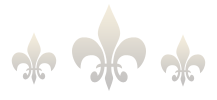
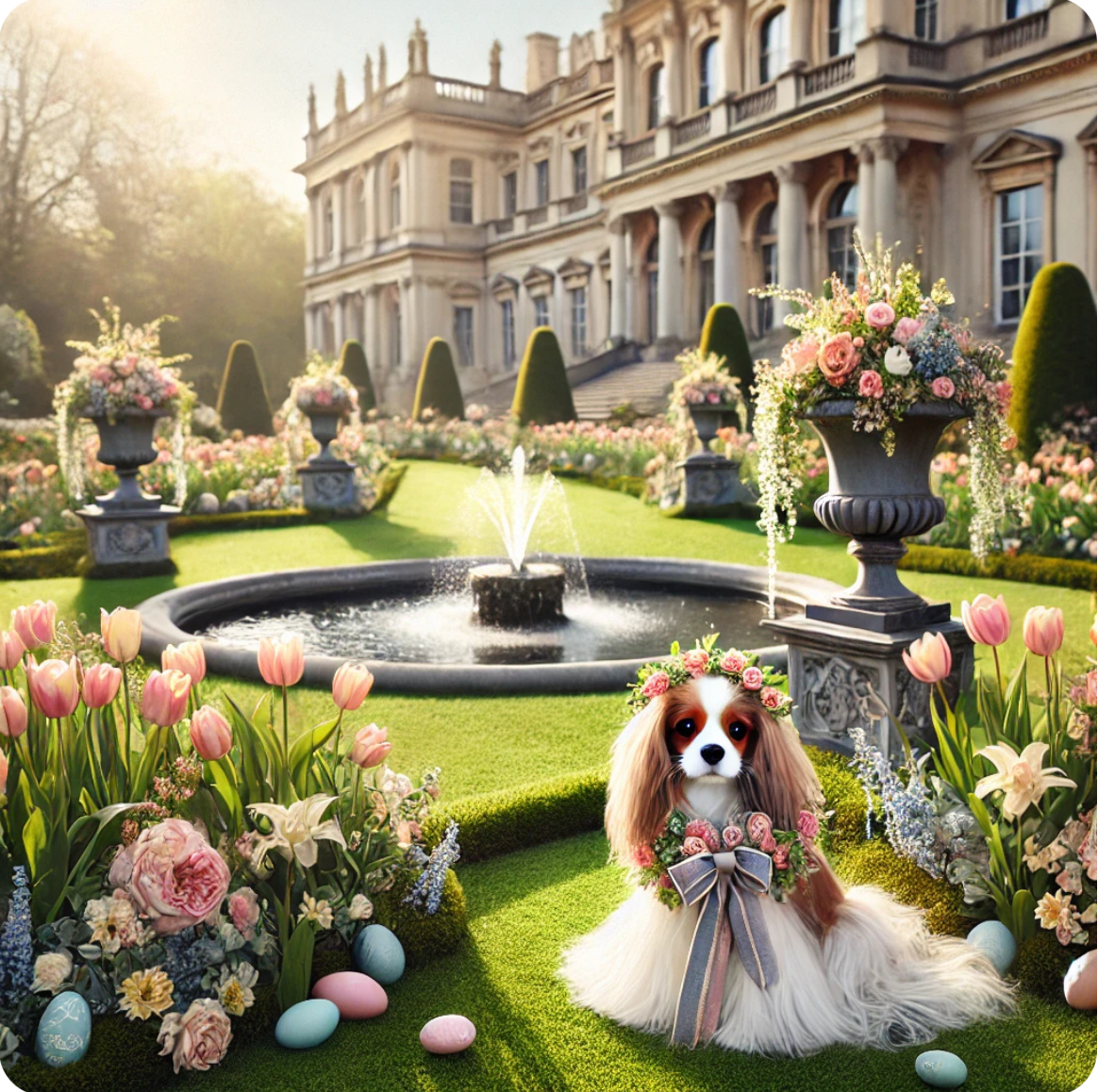
Cavaliers Defined
The Cavalier King Charles Spaniel is a breed rich in history, allied with the royals in England as they were championed by King Charles I and Charles II. He is pictured in the paintings of many an old master—Titian, Gainsborough, Van Dyck, among others. Known familiarly as a toy “Comforter” spaniel, the cavalier was never bred to be anything other than a small, beloved gentle pet, a lap dog to be sure, but also sporting in nature in that he could run behind a horse and enjoy a day’s activities outside the palace walls. Those breed characteristics endure to this day, and indeed are essential to a sound and happy cavalier.
Bred in all 4 colors— Blenheim, Ruby, Black & Tan, and Tricolor — the cavalier suits most esthetic tastes. One of the physical hallmarks of the breed is his ‘royal’ appearance, with large dark soulful eyes and glamorous feathering and coat. In the show ring, NO trimming is allowed, as it is considered essential that the breed be left in its natural state without artifice. Easy to groom, he requires only bathing and regular brushing. According to the breed Standard which is the ‘blueprint’ for the breed describing the ideal dog, the cavalier should be between 12-13” at the shoulder and weigh between 13-18 pounds. Some leeway is permissible.
The cavalier is a happy, gentle dog and not at all aggressive with either dogs or man. Indeed, many owners assert that “you cannot have just one!” He is biddable and very trainable, not only as a household pet, but also as a Therapy, Obedience, and Agility dog. Remember, though, that he cannot always be relied upon to come when he is called if he is chasing a butterfly or following the flight of a bird. For most owners, a fenced yard and/or a leash is a ‘must have.’
The best ally available to the cavalier lover is the American Cavalier King Charles Spaniel Club, the AKC parent club for the breed that was formed in 1993 by a group of dedicated fanciers that favored AKC breed recognition which occurred in 1996.
The ACKCSC is solely dedicated to the well being of the cavalier, and promotes conformation and performance events where owners can compete, learn, and enjoy the company of like-minded cavalier owners.

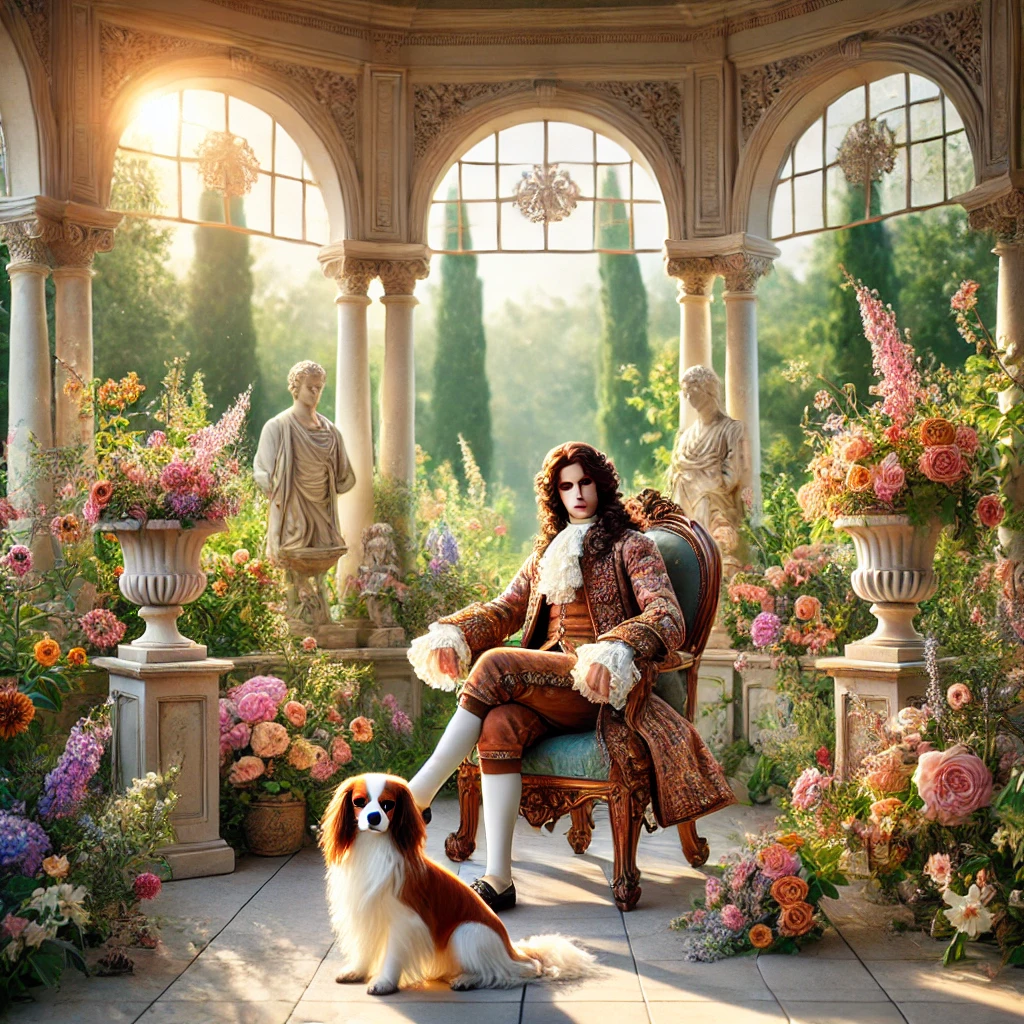
Brief History
The Cavalier King Charles Spaniel is an old breed and yet, it is also a comparatively new breed. The breed as we know it is less than 100 years old. In William Second’s book Dog Painting, the picture painted in 1440 by Antonio Pisano, The Vision of St. Eustace, depicts a group of animals including a pair of small spaniels which Secord notes are “no doubt ancestors of our present day King Charles Spaniels.”
These small Spaniels with their flat heads, high set ears, almond shaped eyes and rather pointed noses are also to be seen in paintings by Rembrandt, Van Dyck, Gainsborough and others. Often referred to as the Comforter Spaniel, they were very much in favor with the aristocracy during Tudor times when the ladies of the court found them very useful not only as companions and confidants but also as hot-water bottles and flea catchers.
By the mid 1800’s the breed had been altered to a dog with a domed skull, long low-set ears, a very short muzzle with a laid back nose and undershot jaw and large round eyes. A number of Lanseer paintings document the changes and by 1900, the dog bearing the name King Charles had been transformed to what we know as the English Toy Spaniel.
In the mid-1920’s, Roswell Eldgridge, an American, went to England to try to find the old type “nosey” spaniels. He was very disappointed that he did not find the dog he had seen depicted in old paintings. For five years he offered a prize of 25 £ at Crufts to the persons who presented the dog and bitch “as shown in the picture of King Charles II’s time, long face, no stop, flat skull, not inclined to be domed and with the spot in the center of the skull.” In 1927, a dog named Ann’s Son was the winner of the 25 £ prize and in 1928, a standard was drawn up using Ann’s Son as the model.
The revival of the breed did not go so far as to return to the small eyes and snippy muzzle opting instead for a softer gentler look. Purists would have us believe that long nosed throwbacks from English Toy Spaniels were the only dogs used in the recreation of the breed. Breed lore suggests, however, that various Cocker breeds, Papillons and perhaps even the Welsh Springer were used to recapture the desired traits.
World War II interrupted the development of the breed when travel to the very few stud dogs available was near to impossible. This led to some very intense inbreeding by some breeders which we might frown on today but which saved this emerging breed at that time.
The first Cavaliers were sent to America in 1952, and in 1956 a club was formed. Soon after they sought AKC recognition but because of the small numbers they were relegated to the Miscellaneous class. In 1993, The American Cavalier King Charles spaniel Club was formed and on January 1, 1996 the breed became the 140th AKC recognized breed.


Breed Standard
General Appearance: The Cavalier King Charles Spaniel is an active, graceful, well-balanced toy spaniel, very gay and free in action; fearless and sporting in character, yet at the same time gentle and affectionate. It is this typical gay temperament, combined with true elegance and royal appearance, which are of paramount importance in the breed. Natural appearance with no trimming, sculpting or artificial alteration is essential to breed type.
Size, Proportion, Substance: Size – Height 12 to 13 inches at the withers; weight proportionate to height, between 13 and 18 lbs. A small, well balanced dog within these weights is desirable, but these are ideal heights and weights and slight variations are permissible.
Proportion – The body approaches squareness, yet if measured from point of shoulder to point of buttock, is slightly longer than the height at the withers. The height from the withers to the elbow is approximately equal to the height from the elbow to the ground.
Substance – Bone moderate in proportion to size. Weedy and coarse specimens are to be equally penalized.
Head: Proportionate to size of dog, appearing neither too large nor too small for the body. Expression – The sweet, gentle, melting expression is an important breed characteristic. Eyes – Large, round, but not prominent and set well apart; color a warm, very dark brown; giving a lustrous, limpid look. Rims dark. There should be cushioning under the eyes, which contributes to the soft expression. Faults – Small, almond-shaped, prominent, or light eyes; white surrounding ring.
Ears – Set high, but not close, on top of head. Leather long with plenty of feathering and wide enough so that when the dog is alert, the ears fan slightly forward to frame the face. Skull – Slightly rounded, but without dome or peak; it should appear flat because of the high placement of the ears. Stop is moderate, neither filled nor deep. Muzzle – Full muzzle slightly tapered. Length from base of stop to tip of nose about 1-1/2 inches. Face well filled below eyes. Any tendency towards snippiness undesirable. Nose pigment uniformly black without flesh marks and nostrils well developed. Lips well developed but not pendulous, giving a clean finish. Faults – Sharp or pointed muzzles. Bite – A perfect, regular and complete scissors bite is preferred, i.e., the upper teeth closely overlapping the lower teeth and set square into the jaws. Faults – Undershot bite, weak or crooked teeth, crooked jaws.
Neck, Topline, Body: Neck – Fairly long, without throatiness, well enough muscled to form a slight arch at the crest. Set smoothly into nicely sloping shoulders to give an elegant look. Topline – Level both when moving and standing. Body – Short-coupled with ribs well sprung but not barrelled. Chest moderately deep, extending to elbows, allowing ample heart room. Slightly less body at the flank than at the last rib, but with no tucked-up appearance. Tail – Well set on, carried happily but never much above the level of the back, and in constant characteristic motion when the dog is in action. Docking is optional. If docked, no more than one third is to be removed. Forequarters: Shoulders well laid back. Forelegs straight and well under the dog with elbows close to the sides. Pasterns strong and feet compact with well-cushioned pads. Dewclaws may be removed.
Hindquarters: The hindquarters construction should come down from a good broad pelvis, moderately muscled; stifles well turned and hocks well let down. The hindlegs when viewed from the rear should parallel each other from hock to heel. Faults – Cow or sickle hocks.
Coat: Of moderate length, silky, free from curl. Slight wave permissible. Feathering on ears, chest, legs and tail should be long, and the feathering on the feet is a feature of the breed. No trimming of the dog is permitted. Specimens where the coat has been altered by trimming, clipping, or by artificial means shall be so severely penalized as to be effectively eliminated from competition. Hair growing between the pads on the underside of the feet may be trimmed.
Color: There shall be four allowed colors for the Cavalier King Charles Spaniel. Blenheim – Rich chestnut markings well broken up on a clear, pearly white ground. The ears must be chestnut and the color evenly spaced on the head and surrounding both eyes, with a white blaze between the eyes and ears, in the center of which may be the lozenge or “Blenheim spot.” The lozenge is a unique and desirable, though not essential, characteristic of the Blenheim. Tricolor – Jet black markings well broken up on a clear, pearly white ground. The ears must be black and the color evenly spaced on the head and surrounding both eyes, with a white blaze between the eyes. Rich tan markings over the eyes, on cheeks, inside ears and on the underside of tail. Ruby – Whole-colored rich red. Black and Tan – Jet black with rich, bright tan markings over eyes, on cheeks, inside ears, on chest, legs, and on underside of the tail. Faults – Heavy ticking on Blenheims or Tricolors, white marks on Rubies or Black and Tans. Dogs not of an allowed color shall be disqualified.
Gait: Free moving and elegant in action, with good reach in front and sound, driving rear action. When viewed from the side, the movement exhibits a good length of stride, and viewed from front and rear it is straight and true, resulting from straight-boned fronts and properly made and muscled hindquarters.
Temperament: Gay, friendly, non-aggressive with no tendency towards nervousness or shyness. Bad temper, shyness, and meanness are not to be tolerated and are to be so severely penalized as to effectively remove the specimen from competition.
Disqualifications: Dogs not of an allowed color.
Sources: AKC.org & ACKCSC.org
